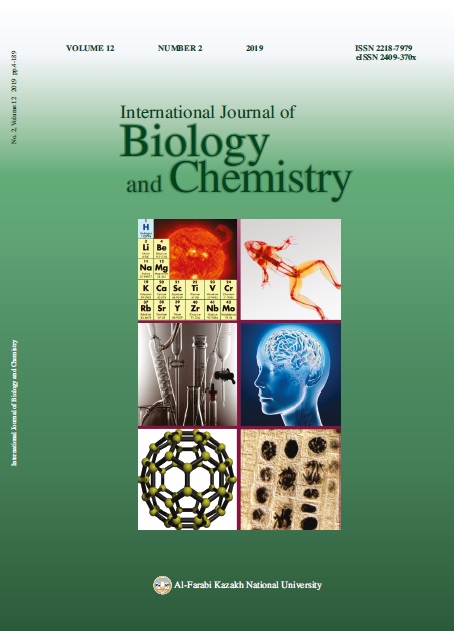Utilization of peanut shells as substrate for cellulase production in submerged fermentation through Box-Behnken Design
DOI:
https://doi.org/10.26577/ijbch-2019-v2-4Abstract
Increasing environmental pollution and global warming encourage bioengineers and
biotechnologists to find renewable and environmental friendly sources of energy. Conversion of biomass
especially agro-industrial biomass consisting of lignocellulosic material into different products and
energy is the modern and promising scheme for this purpose due to their abundance in nature, lower cost
and easy handling. These properties made them potential producers of biofuels in near future. In current
research, Bacillus paralichniformis potential for cellulase production was analyzed using submerged
fermentation, for which peanut shell waste was used as a substrate. Nutritional factors were optimized for
best enzyme production using Box-Behnken Design (BBD) of response surface methodology (RSM).
Results illustrated the maximum enzyme production of 12.838 IU for CMCase and 40.956 IU for FPase
after 24 h of fermentation period. These results were obtained at 3 g/mL susbtrate concentration, 0.45
g/mL yeast extract and 0.01 g/mL MgSO, for CMCase and 3g/mL substrate, 0.45 g/mL yeast extract and
0.3 g/mL MgSO, for FPase. These results proposed the possibility of utilization of this strain for
production of cellulase to endorse its use in industry.
Downloads
How to Cite
Issue
Section
License
ааа





